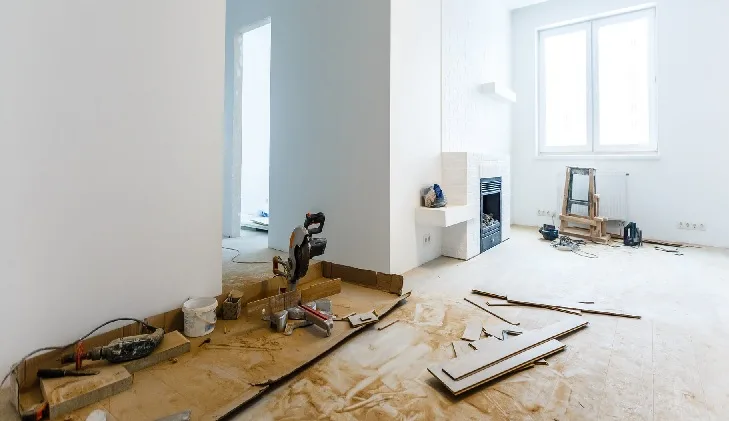Building or remodelling is one of the most exciting things to do, whether you’re starting from scratch to build your dream home or giving your present home a much-needed makeover. But with all of beauty comes the chance of a headache. Friends and family have helped me with these projects, even though they were stressful, went over budget, and made me feel bad about some choices I made.
So, today we’re going to talk about common mistakes you should avoid. These are like a helpful guide that will always be there for you. They are full of great ideas and tips for keeping the project on track. After everything, you’ll feel like you have some power to go on your crazy roller coaster ride without any trouble.
Killing All Budgets: The Biggest Silent Problem of All Time is Underestimating!
People often make big mistakes when they don’t plan their finances ahead of time. No matter how quickly the prices go up, it’s easy to get caught up in the moment and fall in love with those beautiful kitchen countertops or that huge deck. The rising cost of materials can cause a lot of problems to appear out of the blue, like structural problems that were not visible. Also, small changes made here and there can quickly add up.
Instead, start by making a budget and leave a small amount (10–20%) for shocks in case something goes wrong. Find out what the going rates are in your area for supplies and work. Also, here’s a secret: get your workers involved early on. For instance, Sydney financial advisors can help you figure out how to handle your loans, savings, and investments while you’re building. They will keep you from having to use that emergency fund money or, even worse, stopping some parts of the project in the middle of an expensive choice. Keep in mind that when you stick to a budget, you’re not cutting back on anything. Instead, you’re wisely dividing your money so you can treat yourself to things that are important to you.
Skipping the Plans and Permits: A Way to Make Things Take Longer
Not having a plan before starting to tear down or build something is like taking a road trip without a map! You will get there eventually, but it won’t be pretty.
A lot of people don’t realise how important drawings, deadlines, and approvals are until they end up with expensive reworks, delays, or even cases.
- Always have at least a rough idea of what you want to do. Draw it, write it down, and then rank your goals.
- Get builders or designers to help you make your plans or dreams come true.
- You can’t do without permits, one way or another. In spite of what you might think, waiting gives you extra time because approval processes take a long time, which makes you feel less stressed. It can take weeks or months.
One more thing to think about: work with the right pros from the very beginning. A good, respected custom home builder is well worth the money if you want to start from scratch and build a new home. Because they know the local laws, they set up great workflows and networks of providers that make the process go more smoothly. They will not only make your plans work, but they will also build the house you want without putting too many limits on you.
Not Focusing on Sustainability and Energy Efficiency: Save for a Few Days, but Feel Bad About it Forever
As soon as possible, build walls around the original offenders. It’s tempting to skip the eco-friendly designs, but they may cost you in the long run with high energy bills and old systems. More and more climate problems are being talked about, which means that the rush into sustainability is not only bad for the environment but also bad for the wallet.
At the planning stage, you should pick insulation, windows, and appliances that use less energy. If you can afford it, look into solar panels or collecting rainwater. These are usually very worthwhile because you can get refunds, and the costs will go down over time. Check your real plans for green features, such as recycled materials or a good orientation for natural light. This is a pretty cool tip.
Home renovations are probably the best time to sneakily charge for these improvements. For example, when updating a kitchen with LED-filled vials and low-flow faucets, existing efficiencies can be greatly improved. It’s great that being cleaner doesn’t have to mean giving up style; in fact, it can often make it better by making your home more eco-friendly and cost-effective.
Leaving out Contractor Selection: Trust, But Check
If you trust the wrong people, your dream project will quickly turn into a nightmare. That’s the terrible thing about some contractors: they leave in the middle of a job, do bad work, or raise prices at the last minute. The mistake here is to hire people too quickly without giving the process enough thought.
Take your time going through the steps you need to take to hire someone.
- Make sure the contractor has good communication skills, gives you a clear quote, and works on jobs similar to the one you’ve suggested.
- Check their references, read reviews, and make sure they have the right licences.
- Talk to more than one applicant to find the best fit.
As an idea, write down important dates in a contract and make sure that payments are made on time. If payments are late, there should be consequences. In this way, everyone is safe. It is better to solve problems right away through open communication if there are any. Building trust with your worker will also hold them accountable and, even better, allow them to work with you when the best ideas need to come up quickly.
Not Paying Attention to the Details: From Fixtures to Finishes
If you don’t think about the small but important details, they could ruin your job. They pay attention to everything that needs to be fixed, like foundations, roofs, installations, and everything in between. But they don’t pay attention to finishes, fixtures, or even storage options, which makes the area feel incomplete or pointless.
It’s important to think about ergonomics and usability. For example, you could have layered lighting for different moods, a lot of outlets put in useful places, and storage to keep your counters clear. It’s best to see the samples in real life because the lights in your home can change the way colours and textures look.
One great tip I’ve heard is to live in the space for a while (if it’s being renovated) and figure out what makes you uncomfortable before the plans are set in stone. A lot of people might bring up problems like bathrooms that need better air flow or beds that need better soundproofing. As long as you worry about the little things, you will end up with a beautiful home that you can also live in.
Not Planning for the Future: Thinking About the Short Term in a Long-Term Investment
Homes should change with you as you do. However, many new builds or renovations only think about the present, ignoring changes in your life like getting older, having a bigger family, or new technology. Being short-sighted can lead to expensive fixes after the fact.
Plan to be flexible. You could make some features universal by wiring smart houses for gadgets in the near future or making doorways wider so that everyone can use them. If you have kids, think about how rooms can be used as nurseries or businesses.
A good idea that should be shared: keep an eye on trends, but prioritise classic pieces. When you mix neutral colours with pops of personality, you can make changes fast without having to do a full renovation. This will put your investment in a place where it will grow over time and not lose value with every facelift.
Build Smart and Live Happy
From budgets to planning for the future, we just went over a lot of big mistakes. The crux? If you stay away from these things, building or remodelling will never be a scary task. Make a plan, get your team of experts together, and tweak your vision a bit. Then, watch your project turn into a fun adventure that ends with your dream home, and don’t blame yourself for it.





























